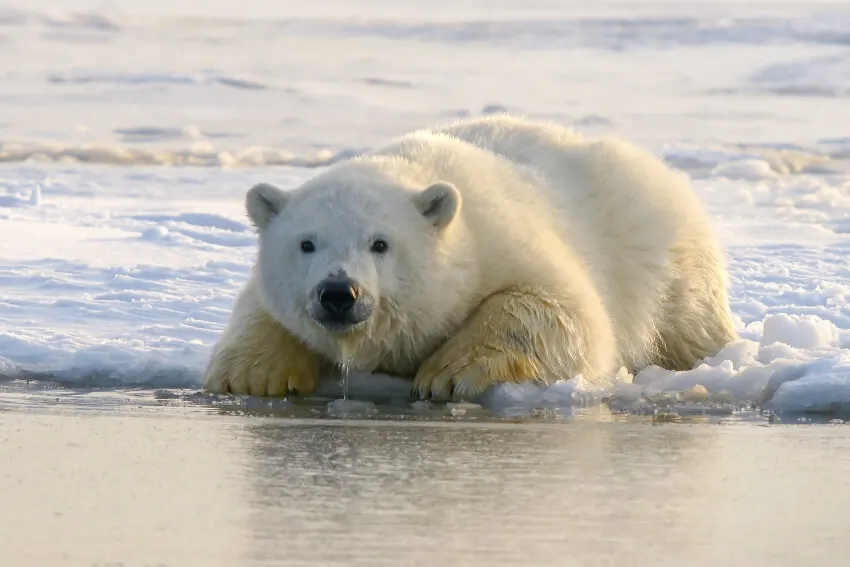
The Polar Bear (Ursus maritimus) is an animal that lives near the North Pole. They live on land and in the water and are known for their white fur coat, which helps them blend into the snow.
- Status: Vulnerable
- Known as: Polar Bear, Ice bear, Thalarctos maritimus, Sea bear,
- Estimated numbers left in the wild: between 22,000 and 32,000.
At a time, people hunted these animals for their fur coats, but now they are protected species. If you want to learn more about this amazing creature, read on! Polar bears are the largest land carnivores in the world and can weigh up to 1,500 pounds.
They have long necks, small heads, and large feet, which help them move easily on the ice. Their fur is not white but clear with a yellowish tint.
| Category | Information |
|---|---|
| Scientific Name | Ursus maritimus |
| Population Size | Estimated 22,000 to 31,000 individuals |
| Distribution/Geography | Arctic Circle, Arctic Ocean, surrounding seas, and land masses; territories of Denmark (Greenland), Norway (Svalbard), Russia, the United States (Alaska), and Canada |
| Habitat | Sea ice covering waters over the continental shelf and Arctic inter-island archipelagos |
| Appearance | Large bear with a layer of dense underfur and transparent guard hairs that appear white to tan; fur yellows with age |
| Size | Largest extant bear species and largest extant land carnivore |
| Adaptations | Body characteristics adapted for cold temperatures, moving across snow, ice, and open water |
| Diet | Hypercarnivorous; primarily eats blubber and skin of Ringed seals; also consumes birds, fish, berries, reindeer, walrus, and carcasses of walruses, seals, whales |
| Social Structure | Solitary; however, may come into competition over food sources |
| Reproduction | Polygynous; courtship and mating occur on sea ice in April and May |
| Gestation Period | Fertilized egg remains suspended until August or September; cubs born between November and February |
| Cubs Per Litter | Usually 2 cubs |
| Weaning | Cubs nurse on fat-rich milk until they leave the den in mid-February to mid-April |
| Maturation | Females breed at 4-5 years, males reach reproductive maturity at 6 years but may not breed until 8-10 years due to competition |
| Conservation Status | Vulnerable (VU) according to IUCN Red List |
| Population Threats | Climate change, melting sea ice, hunting, industrial activities, pollution |
| Ecological Niche | Top Arctic carnivore; remains of prey are an important food source for other species |
| Cultural Significance | Key figure in the material, spiritual, and cultural life of circumpolar peoples |
| Interesting Facts | Known as “white bear” or “nanook”; fur is not actually white but transparent and reflects light; excellent swimmers; can detect seals nearly 1.6 km away and under 1 m of snow |
Description
Anatomy and Appearance
The mightiest terrestrial predator of the modern age, the polar bear is a massive white-furred bear from the Arctic.
Though it appears white, their fur is clear, though the light refracts from it to produce these bears‘ characteristic snow-white, yellow-white, or pale tan appearance.
Fascinatingly, so little heat escapes through the bear’s fat and fur that they have almost no infra-red signature and cannot endure temperatures above 10 degrees Celcius.
Male Polar Bears
Male polar bears have a very distinctive appearance. They are much larger than female polar bears, with a hulking build and big, blocky heads.
They also have a thick coat of white or light brown fur. This fur helps them to stay warm in the cold Arctic climate. Male bears also have long, sharp claws for hunting and fighting.
Female Polar Bears
The female polar bear is typically smaller than the male polar bear. The bears’ fur is typically white, and they have a black nose. The female bear’s anatomy is specifically designed for life in the cold Arctic environment.
Her fur coat is thick and dense, and her skull is rounded to break through ice easily. Her body also has a layer of fat that helps to keep her warm in the cold water. The female polar bear is an excellent swimmer and can travel long distances through the water.
Etymology

The word “polar” is derived from the Latin word “Polaris,” meaning “of or relating to the poles.” The word “bear” is derived from the Old English word “bear,” meaning “to carry.” Thus, the wild polar bear is a bear that lives near the poles.
Distribution
The polar bear is a circumpolar predator in the Arctic region north of the New and Old World. The bears are found on tundra, ice, pack ice, or ice floes, and sometimes swim in the open ocean for considerable distances.
Polar Bear Habitat
The habitat of a polar bear is the Arctic tundra. They can survive in such a cold climate because they have a thick layer of fur that helps keep them warm. They also have a layer of fat underneath their skin that provides insulation. Their habitat comprises ice, snow, and tundra, a type of treeless plain.
Polar Bear Diet and Nutrition
Polar bears are carnivores, and their diet consists mostly of seal meat. They will also eat other animals, such as walrus, reindeer, and whales, when they can find them. These bear species have very sharp teeth specially adapted for slicing through the fat of seals.
When the sea ice is thick and solid in the summer, these bears hunt seals from the ice. They sneak up on them by waiting at holes that the seals pop their heads out of to breathe. Once they catch sight of a seal, they launch themselves into the air and grab it with their teeth.
When the sea ice melts in the winter, and no seals are found, the bears sometimes eat seaweed and other plants.
Hunting
These bear species are powerful, solitary hunters, though they are not territorial and can be quite companionable and playful when several bears are together. Their main prey consists of seals. To hunt these animals, the polar bear lurks in broken ice areas, waiting for a seal to surface for air.
Ringed seals and bearded seals form the vast majority of their diet, though they will eat practically any animal found in the Arctic, including belugas and narwhals, sea birds, and dead, beached whales. Highly athletic, these bears are excellent swimmers and can swim 10 kilometers per hour for a considerable distance.
They are the top predator in the Arctic ecosystem, with no natural predators. This means that the polar bear has a very high degree of food security, as it is at the top of the food chain and, therefore, has a wide variety of prey.
While hunting on land, the bear primarily preys on seals, which will either stalk and ambush or chase down. The bear is also an expert at hunting marine mammals from the ice, using its powerful sense of smell to track them down.
Their sense of smell is extremely keen, allowing them to smell seals for up to 1.6 kilometers, and their hearing and eyesight are also excellent.
Polar bears are fairly tolerant of their species and have been observed playing with sled dogs (though they are usually hostile to dogs).
They gather on sea ice during April and May to hunt seals and breed. Male polar bears will fight over female polar bears, but females often mate with several males anyway.
The eggs do not develop until autumn, giving the female time to eat and gain weight. The cubs are born in a maternity den over the winter while their mother is hibernating.
Polar bears live to around 25 years in the wild when they become slightly slowed by aging and starve to death, though they could live for another 15 to 20 years before reaching the end of their biological lifespan.
Predator
The predators of polar bears are typically other large predators, such as wolves and bears. Humans may also hunt them for their fur or meat.
The polar bear is a very large and powerful animal, but it also has some predators that can be dangerous. The main predators of the polar bear are the gray wolf and the grizzly bear.
The gray wolf is the most common predator of the bear. They can usually take down a young or sickly bear, but an adult polar bear is too much to handle.
The grizzly bear is another polar bear predator, even more dangerous than the gray wolf. Grizzlies can take down a healthy adult polar bear with ease.
Humans are also predators of these bears, although humans do not hunt them for food. Humans kill them for their fur, used to make clothing and other items. Humans also kill them because they are a danger to humans. They have been known to attack humans, although this is rare.
Behavior
Polar bears are known for their calm temperaments. They are not naturally aggressive and will only attack humans if they feel threatened. In general, they are quite gentle creatures that enjoy playing and swimming. These bear species become aggressive when threatened or intruded upon their territory.
The solitary attitude of polar bears is often misunderstood. Many people think they must be mean and aggressive because they are solitary animals. However, this is not the case. Polar bears are gentle creatures who only become aggressive when feeling threatened or scared.
This solitary nature comes from their need to protect their food source. Polar bears are very good at hunting, and they need to be able to focus on their prey to succeed. It means that they cannot afford to be distracted by other animals.
These bear species are also very curious creatures. They are always exploring their environment and trying to learn new things.
This curiosity can sometimes get them into trouble, but it also means they can always adapt to new situations. It is one of the things that makes them such good survivors in the wild.
They are very intelligent animals. They have a good memory and can remember things for a long time. This intelligence helps them to understand their environment and to find food. It also helps them to avoid danger.
Polar Bear Mating Habits
The mating habits of the polar bear are interesting and unique. Unlike other bears, the bear does not mate seasonally. Instead, they mate whenever they find a partner with whom they are compatible. It can happen at any time of year.
The polar bear breeding season typically occurs in late April or early May. When male and female polar bears decide to mate, they will get together and start to play.
This often involves a lot of physical contact, including biting, wrestling, and rolling around on the ground. After a while, the two bears will become sexually aroused and start to mate.
These bear species‘ gestation is about eight months. When they are ready to give birth, they find a safe place on land to have their cubs. After the cubs are born, the mother bear will nurse and care for them until they can care for themselves.
See Related: How Does Saving Water Help Climate Change?
Polar Bear Cubs
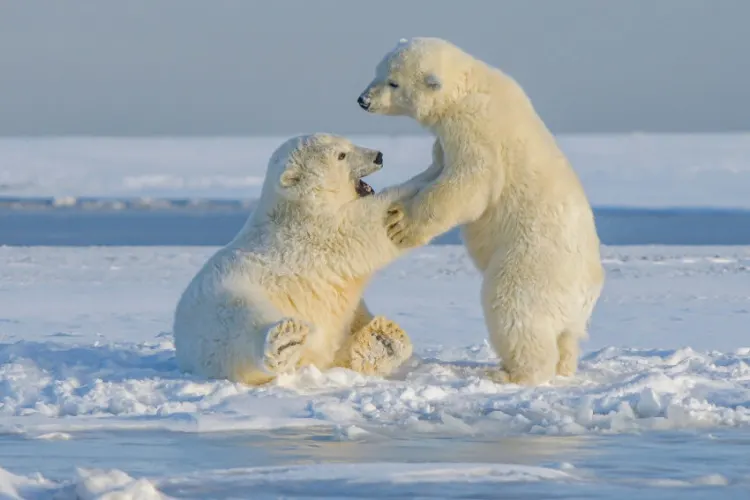
When polar bear cubs are born, they are tiny and weigh only a pound or two. They are helpless and need their mother to take care of them. The cubs stay with their mothers for two to three years, learning to hunt and survive in the Arctic.
They have a very interesting lifecycle. They are born in the winter, while it is still dark outside. Their mother will build them a den out of ice and snow and stay with them until they are ready to leave.
Polar bears do not reach sexual maturity until they are about five years old, and after the bear mating, the female bears will give birth to one or two cubs. The cubs will stay with their mother for about two years, learning to hunt and survive on the Arctic sea ice.
See Related: What Attracts Bears?
Relationship with Humans
The relationship between polar bears and humans has been a complicated one. Humans have hunted polar bears for their fur, meat, and other body parts for centuries. As a result, the population of bears has decreased significantly.
However, in recent years, there has been a shift in the way humans view polar bears. People are now beginning to appreciate these animals’ beauty and importance to the environment.
See Related: Types of Bears From Around The World
Role in the Ecosystems
The polar bear is an important predator in the arctic ecosystems, playing a critical role in keeping populations of prey animals in check. They are also keystone species, meaning their presence or absence disproportionately impacts the surrounding ecosystem.
These bear species are the largest land predators on Earth, and their size is a direct adaptation to their primary prey: ringed seals. A polar bear can eat more than 100 pounds of seal meat in a single meal, and they will often eat several meals per day when seal populations are plentiful.
Despite their impressive hunting skills, bears rely on a steady food supply. They have one of the lowest calorie-to-mass ratios of any mammal, meaning they require a large amount of food relative to their body size.
If the polar bear became extinct, it would have a devastating impact on the Arctic ecosystem. The loss of the bear would mean the loss of an important predator, which would upset the delicate balance of the Arctic Ocean food web.
Without these bear species to keep populations of seals and other prey in check, these animals could quickly become overpopulated and cause further damage to the environment.
Population
The polar bear population is in trouble. According to the World Wildlife Fund, only 22,000 polar bears are left. That’s down from about 25,000 in 2005.
There are several reasons for the decline in the polar bear populations. One reason is climate change. Polar bears rely on sea ice to hunt for food, and as the planet warms, that ice melts earlier and disappears for long periods.
See Related: Is It too Late to Stop Climate Change? Fast Facts to Know
Polar Bear vs Other Bear Species
Other bear species exist worldwide, including the Asiatic black bear, the sun bear, the sloth bear, and the brown bear. While all bears are impressive animals, each of these other species has unique features that make it stand out.
Polar Bear vs Asiatic Black Bear
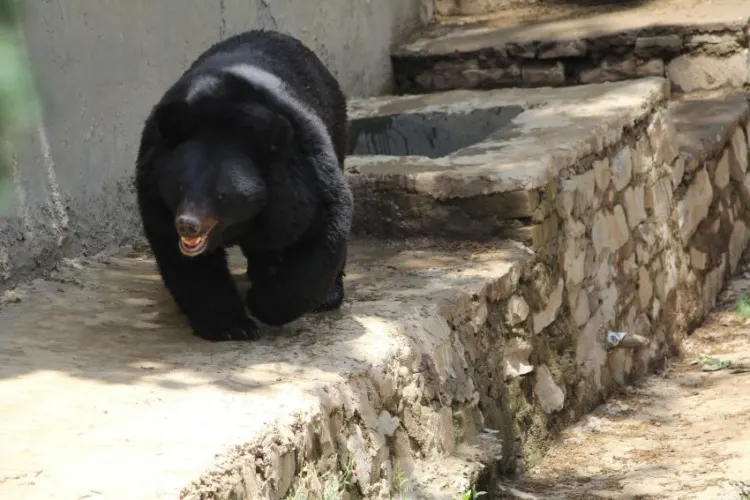
The Asiatic black bear is a medium-sized bear found in Southeast Asia. It has a shaggy black coat and white face with a black muzzle. This species is shy and solitary by nature, and it feeds mainly on insects, fruits, and small mammals.
There are many differences between polar bears and Asiatic black bears, the two most notable being their habitats and diets. These bear species live in the Arctic region, hunting seals for food.
On the other hand, Asiatic black bears live in forests in Asia, where they eat a variety of things, including insects, small mammals, and fruits.
Polar bears are much larger than Asiatic black bears. An adult polar bear can weigh up to 1,500 pounds, while an adult Asiatic black bear weighs only 200-300 pounds.
These bear species also have longer necks, skulls, and noses than Asiatic black bears. And their fur is whiter than the black fur of Asiatic black bears.
See Related: Grizzly Bear vs Black Bear: What’s the Difference?
Polar Bear vs Sun Bear
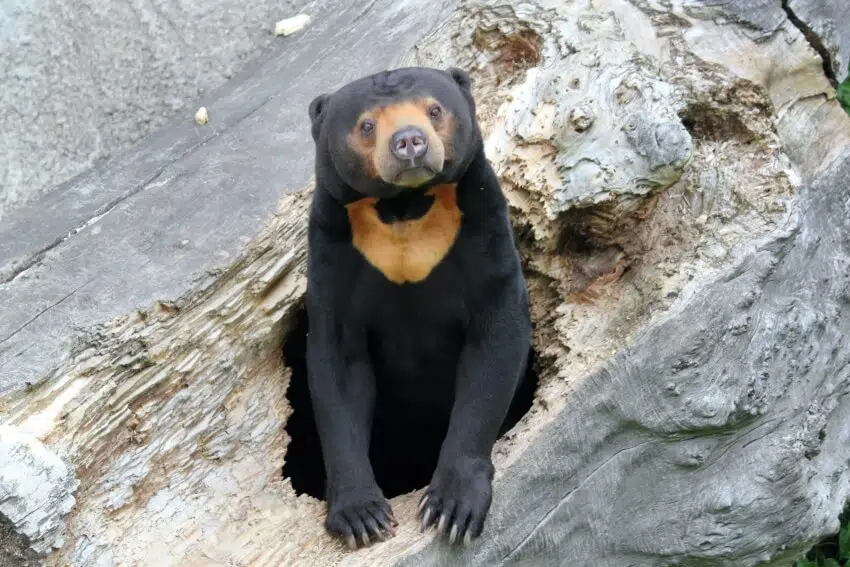
The Sun bear is the smallest of all the bears, weighing only around 100 pounds. It has reddish-brown fur and a long muzzle with a black stripe running down the middle. This bear is found in the tropical forests of Southeast Asia, and it feeds on fruits, honey, and insects.
Polar bears and Sun bears are two different types of animals. They are a type of bear that lives in cold climates, while Sun bears are a type of bear that lives in warm climates.
Sun bears are also smaller than polar bears. These bear species are white without black spots, while Sun bears are brown with black spots. Polar bears live on the Arctic sea ice, while Sun bears live in Asia. Polar bears eat seals, while Sun bears eat honey.
Polar Bear vs Sloth Bear
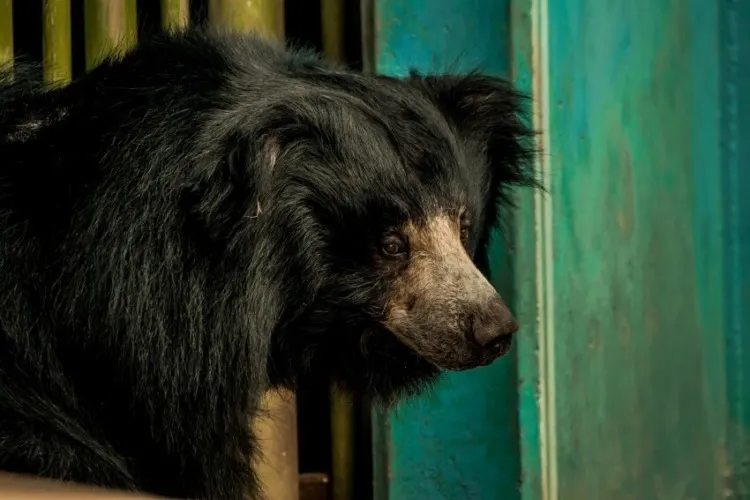
The sloth bear is a medium-sized bear found in the Indian subcontinent. It has black fur with white patches on its chest, and its face is long and narrow. This species is nocturnal, and it feeds mainly on termites and ants.
The two animals are quite different. Polar bears are much larger and have a thick coat of fur that helps them stay warm in cold climates.
On the other hand, Sloth bears are much smaller and have a shaggy fur coat that helps them stay cool in warm climates. They are also excellent swimmers, while sloth bears are not.
These bear species live in the Arctic, which is cold most of the year. Sloth bears live in tropical forests, which are warm most of the year. Polar bears eat mostly seals, while sloth bears eat mostly ants and termites.
Polar Bear vs Brown Bear
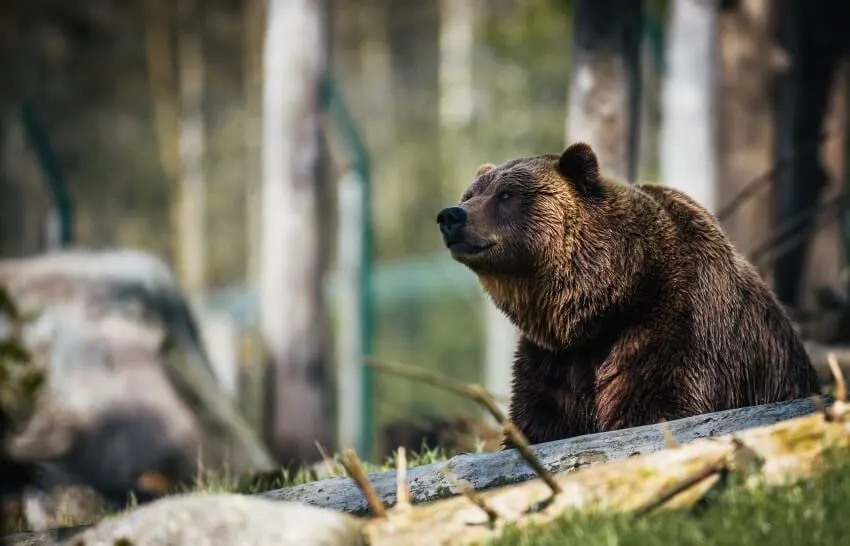
Brown Bears are the largest land predators in the world. They can weigh 1,500 pounds and measure up to nine feet long. Brown Bears can be found in North America, Europe, and Asia.
Polar bears and Brown bears are two different types of bears. These bear species are white and live on the Arctic sea ice, while Brown bears are brown and live in North America, Europe, and Asia.
The bears are taller and have longer necks, unlike Brown bears. They also have shorter fur and a more rounded body.
Brown bears are stockier and have a longer snout. They also have longer fur and claws. They are more carnivorous than Brown bears, and their diet consists mainly of seals. Brown bears are more omnivorous, and their diet consists of both plants and animals.
Polar Bear Facts
Here are the fun facts you need to know about Polar bears:
- The polar bear is the largest land predator on Earth, standing over 7 feet tall and weighing 1,500 pounds.
- Its massive size and thick fur coat allow it to survive in the extremely cold climates of the Arctic.
- These bear species have long, sharp claws to catch prey like seals and walruses.
- They are different from other bear species in several ways.
- They are also the only bears that eat primarily seals and walruses, which give them their characteristic blubber layer.
- They are very good swimmers and have been known to swim for days at a time.
- They can even sleep while they are swimming.
- These bear species were also called the White bear, Ice bear, Ursus maritimus, and Sea bear.
- These bear species are the largest land predators on Earth.
- They can weigh up to 1,500 pounds (680 kilograms) and grow to 11 feet (3.4 meters) long.
- Females are usually smaller than males.
- They spend most of their time on the sea ice, hunting for seals. When the sea ice melts in the winter, these bears sometimes come ashore and travel across the land for food.
- Most polar bears live in Canada, Russia, Greenland, and the United States (in Alaska).
- These species are very good at surviving in cold climates.
- They have thick fur that helps keep them warm and a layer of fat under their skin, providing extra insulation.
See Related: Most Comfortable Animals in the World
Conservation Status

The polar bear is considered a vulnerable species due to the effects of climate change on its habitat. They are also hunted for their fur and meat, which puts them at risk of extinction. Steps must be taken to protect these animals and their habitat, or they may soon disappear.
Threats
Climate Change
Today, the biggest threat is climate change’s unpredictable but doubtless negative effects, affecting the bears and the seals they depend on for food. The ice-free Arctic could potentially spell the doom of these magnificent animals if greenhouse gasses are not controlled quickly.
The population of polar bears is affected by climate change in a few ways. First, because the ice is melting, they have less space to live on and less food to eat.
Next, because the temperature is getting warmer, their habitat is changing, and some polar bears must relocate to different parts of the world.
This can be difficult for them because they are used to living in a certain area and may not know how to survive in a new environment.
Lastly, climate change also affects the way that bears reproduce. There is less opportunity for them to mate and have cubs with less ice. As a result, the population of polar bears is slowly declining.
Hunting
Polar bears are thoroughly protected from hunting, and though poaching occurs, it is not a major threat as it once was. In the 1970s, bears were almost hunted to extinction, leading to the current hunting ban and protected status.
The population of polar bears is affected by hunting in several ways. Firstly, when hunters kill bears, they take away the bears’ ability to breed.
The high demand for polar bear fur has led to many animals being killed illegally. The black market trade of polar bear fur is a serious problem, as it threatens the future of this species.
This can seriously reduce the population size over time. Secondly, hunting can also cause these bears to flee their territory, making it difficult for them to find food or mates. As a result, this can also lead to a decline in the population size over time.
Food Scarcity
The population of polar bears is greatly affected by food scarcity. Their diet mainly consists of seals, and when food is lacking, the bears are forced to go hungry.
This can often lead to starvation and death. As a result, the population of polar bears has been declining in recent years.
Polar bears rely on the ice to catch their prey, consisting of seals. With the rising temperatures and decreasing ice caps, the polar bears are struggling to find food and, as a result, are becoming malnourished and facing possible extinction.
The fishing industry is one of the primary sources of food competition for polar bears in the Arctic Ocean.
Commercial fishing boats travel to the arctic to catch cod, herring, and other fish that are a significant part of the polar bear’s diet. The increase in fishing activity has caused a decline in the populations of these fish, which has, in turn, led to a decrease in the number of polar bears.
In addition to competition from the fishing industry, these species are also threatened by climate change. As the Arctic region warms, the sea ice the bears rely on for hunting and traveling is melting.
Industrial Development
Industrial development near the polar bear habitats can significantly impact their population. Industries that produce pollutants can contaminate the water and land the bears rely on for food and shelter.
The toxins from the pollution can cause health problems in the bears, leading to decreased reproduction rates and lower population numbers.
Pollution
In recent years, the polar bear population has declined due to several factors, including climate change and pollution. Pollution, in particular, is a major threat to the bears such as oil and gas, as it contaminates their food supply and causes health problems. Oil spills are a particular concern, as they can be deadly to polar bears.
The Exxon Valdez spill in 1989 was particularly devastating, and it is estimated that over 200 polar bears were killed as a result. The bears’ health and reproductive success may also be suffering from pollutants. As the apex predators of their environment, they absorb and concentrate pollutants from the flesh of their prey and may have a more difficult time recovering because of this.
The threat of pollution continues to be a major concern for conservationists, and more needs to be done to protect these iconic creatures.
See Related: Fascinating Facts About Conservation
Conservation Efforts
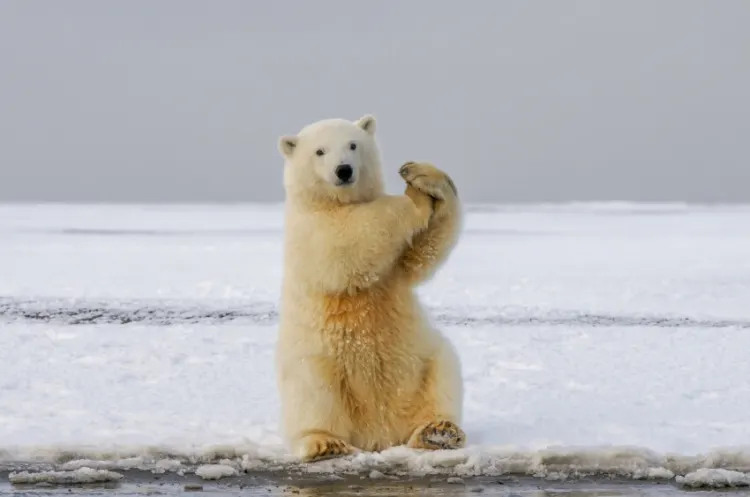
A highly successful conservation program is responsible for the polar bear’s survival into the 21st century and its still-rebounding numbers. The International Agreement on the Conservation of Polar Bears curtails hunting and protects these large animals’ breeding and migration areas.
The Endangered Species Act also protects endangered and vulnerable animals like Polar bears. More efforts are now needed to help the bears survive climate change – though if the change is too drastic, these attempts will be in vain.
The polar bear is one of the most iconic animals in the Arctic sea ice but also vulnerable. Climate change has caused the sea ice to melt, crucial for the bears’ survival. As a result, their population has declined by more than 40% over the last three decades.
Fortunately, several conservation organizations are working to protect these animals. For example, the World Wildlife Fund is working to create protected areas for bears and raise awareness about climate change. They’re also working with local communities to help them adapt to the changing environment.
The International Union for Conservation of Nature (IUCN) is also doing important work to protect the bears. They’ve developed a plan that includes reducing human-caused greenhouse gas emissions, protecting the bears’ habitat, and improving monitoring of the polar bear population.
These are just a few of the organizations that are working to save the polar bear.
See Related: Best Conservation Posters
Conservation Organizations
Bear Trust International
Bear Trust International is an American organization that protects different bear species worldwide and their habitats through education, research, management, and habitat conservation.
Hauser Bears
Hauser Bears is a UK-based charity with a mission to change people’s attitudes towards bears. Their main work revolves around research and education to ensure a future for all bear species.
World Wildlife Fund
The World Wildlife Fund (WWF) is a global nonprofit organization that focuses on conserving animals and their habitats.
One of the WWF’s flagship programs is its polar bear conservation initiative. The WWF has been working to protect polar bears for many years and has made significant progress.
The f is doing a number of things to help conserve polar bears. For example, WWF is working to reduce greenhouse gas emissions and helping to create national parks and other protected areas that will help preserve the polar bears’ habitat.
The organization is also working to raise awareness about climate change and human activity’s threats to polar bears and other wildlife. You can learn more about WWF’s work to conserve polar bears by visiting their website.
Andean Bear Project
The Andean Bear Project is a conservation initiative dedicated to protecting the critically endangered Andean Bear and other bear species. This project is based in Peru, where the Andean Bear population has been declining at an alarming rate.
The Andean Bear Project aims to increase the number of these species by working with local communities to promote sustainable land management practices.
Ursus International
Ursus International is a nonprofit, charitable organization that focuses on the conservation of bears. They work to protect bears through education, research, and habitat preservation. Ursus International believes we can create a world where bears thrive through cooperation and education.
Bears are important animals that play critical roles in their ecosystems. By protecting bears, we are also protecting the environment. Bears help control prey species populations, disperse seeds, and create new habitats. They are also an important part of our culture and history.
Ursus International is doing important work to protect bears around the world. With your help, they can continue this work and ensure that bears will be a part of our future.
Bears are some of the most important animals on Earth. They play critical roles in their ecosystems and help to maintain balance.
By protecting bears, we are also helping to protect our environment. Bears are an important part of our culture and history, and we must work together to ensure their survival for future generations.
FAQ
Why are polar bears endangered?
The main threats to polar bears are climate change, which is melting their sea ice habitat, and human-polar bear conflict, where bears are killed after coming into contact with people or raiding their food supplies.
How many are polar bears left?
There are about 22,000 polar bears left in the world.
Are polar bears friendly?
Polar bears can be friendly to humans in some cases.
Polar bears are known for being solitary, reclusive animals that actively seek out human contact only when hungry or when the ice melts and displaces them onto land.
When on land, they will approach humans or open cars and seem eager for a little handout–or even a meal.
Polar bears have been known to attack humans without provocation, however. In some cases, they seem to have done so out of curiosity, while in other instances, the attacks may have been motivated by hunger or territoriality.
Whatever the case, these powerful predators are not to be trifled with, and any encounter should be approached with extreme caution.
Are polar bears aggressive?
For the most part, polar bears are not aggressive, but when a polar bear does attack, it usually has something to do with feeding or protecting their young.
Is a polar bear a bear?
Yes, a polar bear is a type of bear. They are the largest land predator on Earth and can weigh up to 1,500 pounds.
How can I help protect bears around the world?
You can help protect polar bears around the world by becoming an engaged citizen.
Research companies before they buy a product to see if they are environmentally friendly, sign petitions, and donate to beer-friendly organizations. It is also important that citizens make their status on the global warming known and demand change.
Other Species Profiles
Related Resources
